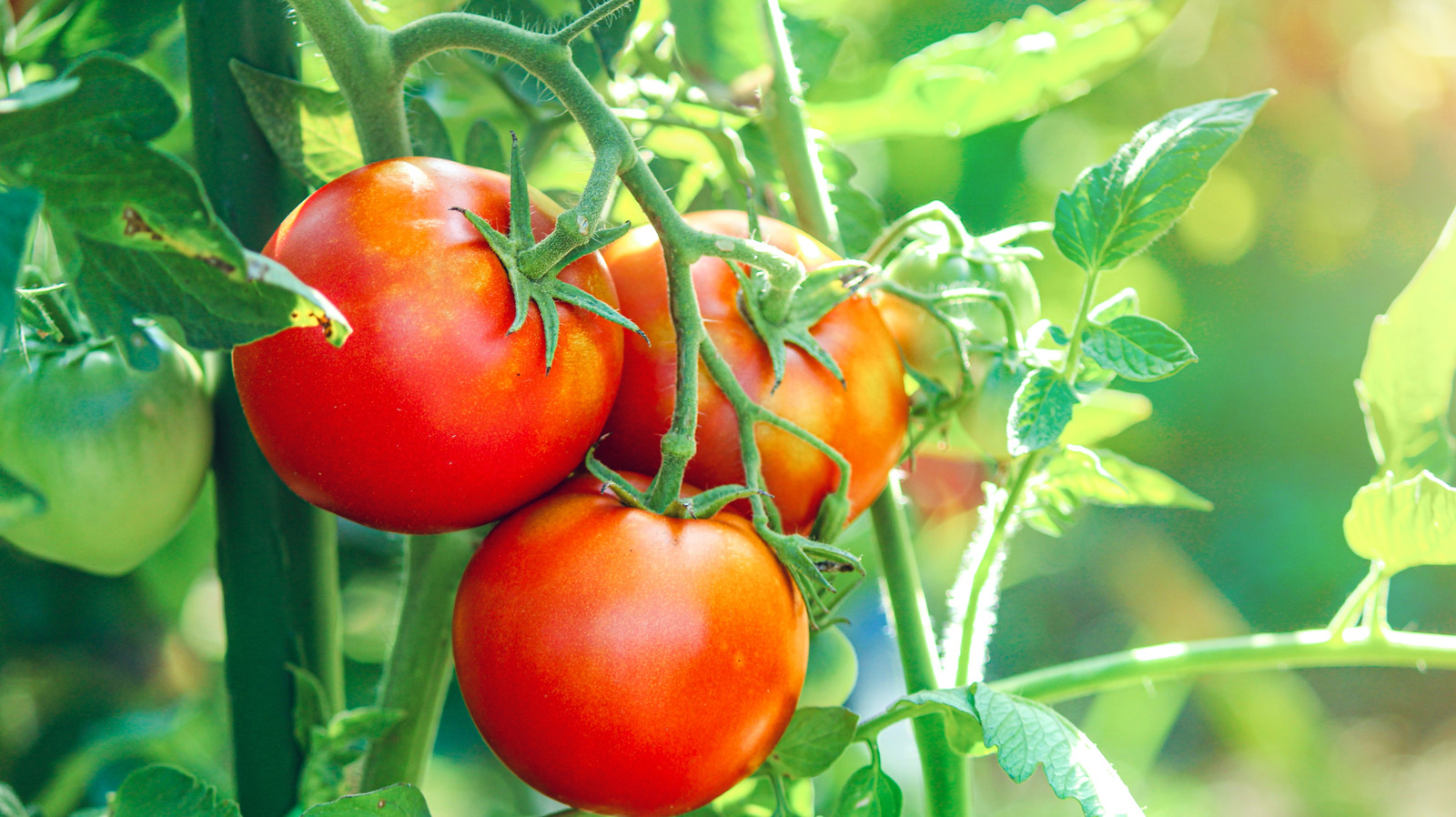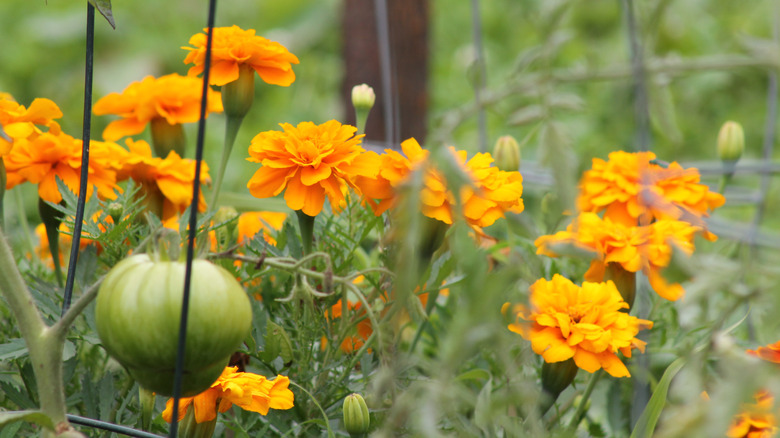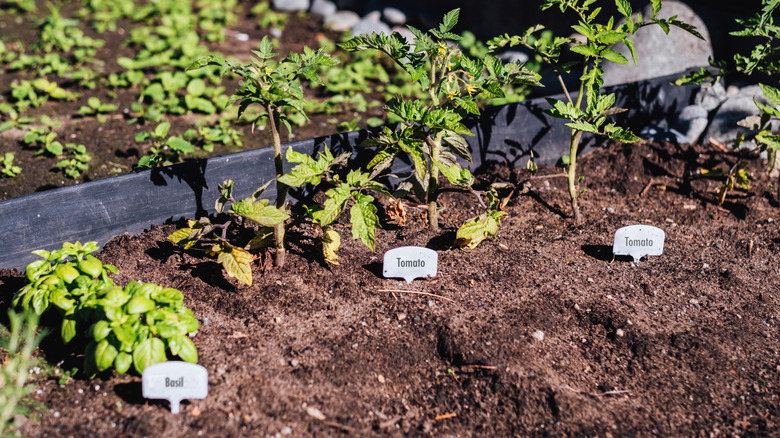You’ve ordered your fruit and vegetable plants online from the best suppliers, you’ve prepared your soil, and you’ve made a plan for how you’re going to get the most out of your summer vegetable garden. When you’re putting in the hard work required to create a fruitful harvest, it’s important to protect your garden from bugs and other animals that would love nothing more than to chow down on the fruits of your labor — particularly your hard-earned, juicy tomatoes. Thankfully, you can brighten up your garden and keep pests away at the same time.
Marigolds aren’t just a cute flower that can add pretty red, orange, and yellow hues to your garden — they can actually help keep garden pests like nematodes, hornworms, squash bugs, and even deer away from tomatoes. The reason marigolds work so well to keep tomato-loving pests at bay is simple: Their stems and leaves emit a strong smell that many insects and animals, including squirrels and rabbits (two other tomato thieves), can’t stand. Best of all, placing marigolds near your tomatoes and other plants is a fairly simple process, as is caring for them. And they even grow nicely next to other companion plants that lend their own pest-repelling powers to your vegetable garden.
Planting and caring for marigolds next to your tomatoes
Planting marigolds around the edge of your garden, raised beds, or in-ground beds – 12 to 24 inches away from tomato plants — creates a virtual fence that encourages insects and other animals to look elsewhere for a snack. You can also plant circles of marigolds around your tomato plants, being sure to leave at least 1 foot between the marigolds themselves and your tomatoes. If you’re using pots to grow your tomato plants, planting marigolds in a nearby pot can work well. Ensuring the marigold pots are within 18 inches of the tomato plants will make caring for both more convenient and allow ample space for them to expand. If you choose to grow the marigolds in the same pot as the tomatoes, make sure you have a big enough pot to accomplish this.
Marigolds aren’t temperamental, and don’t require a lot of maintenance. Like the tomatoes they’ll be protecting, they thrive in the hotter U.S. climates (USDA zones 2-11) in loamy, well-drained soil, and are known for their ability to tolerate droughts. Plant your marigolds from spring (after the last frost) to mid-summer, and, just like tomatoes, give them at least six hours of direct sunlight per day. Deadheading (removing dead blooms) isn’t necessary for marigolds to grow, but it can help your plants produce more flowers, giving you more pretty protectors for your tomatoes.
Other plants that keep pests away from your tomatoes
Marigolds are great for keeping pests away, and there are other plants you can use in conjunction with them to lessen the likelihood that insects and other animals will get to enjoy your tomatoes before you do. Try planting basil alongside marigolds to one-two punch pests before they get near your tomato plants. Basil is widely known as one of the most effective pest-repelling plants, and it grows well next to marigolds. You’ll also find tons of ways to use the herb in your kitchen (try adding fresh basil to your mayonnaise — you’ll never go back). In addition to repelling a variety of pests, including tomato-loving hornworms and fruit flies, basil, along with marigolds, attracts bugs that will help your garden thrive, like bees and butterflies.
Borage — a Mediterranean-native plant that produces gorgeous, lavender-colored flowers — is another pest-repelling rockstar. It not only deters pests like the tomato hornworm, but it is also able to trap slugs and snails (they also love tomato plants), keeping them away from the fruits of your labor. Borage grows well with basil and marigolds, and it also works to attract bugs that eat garden pests (like lacewings and hoverflies), as well as bees and butterflies. Hummingbirds love borage as well, so keep an eye out for them flitting around in your garden. Bonus: Like marigolds, borage is one of the edible flowers that you absolutely must try for dressing up salads, drinks, desserts, and more. It will go great with the variety of tomato dishes you’ll make with your healthy crop.







